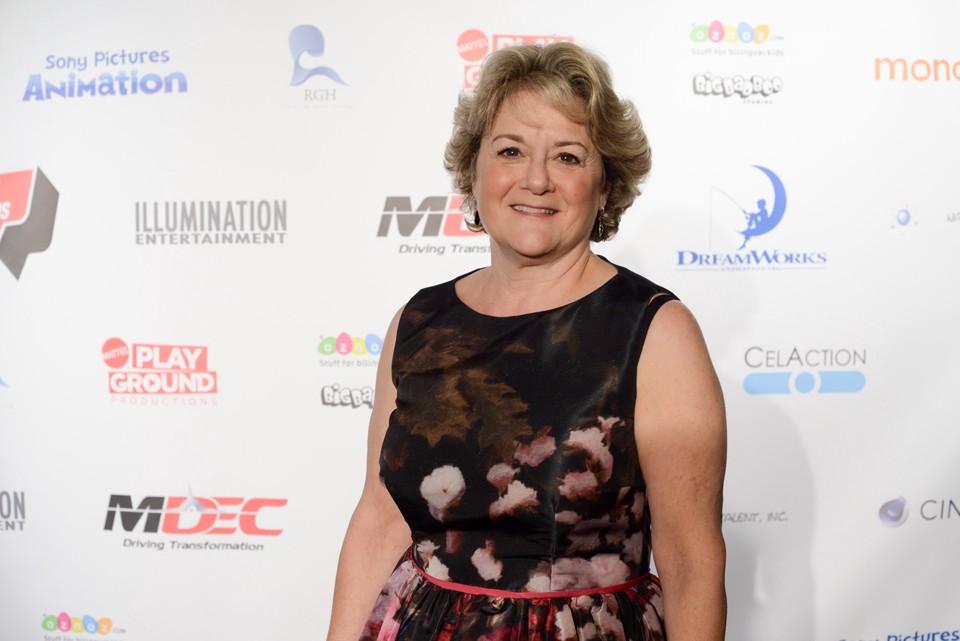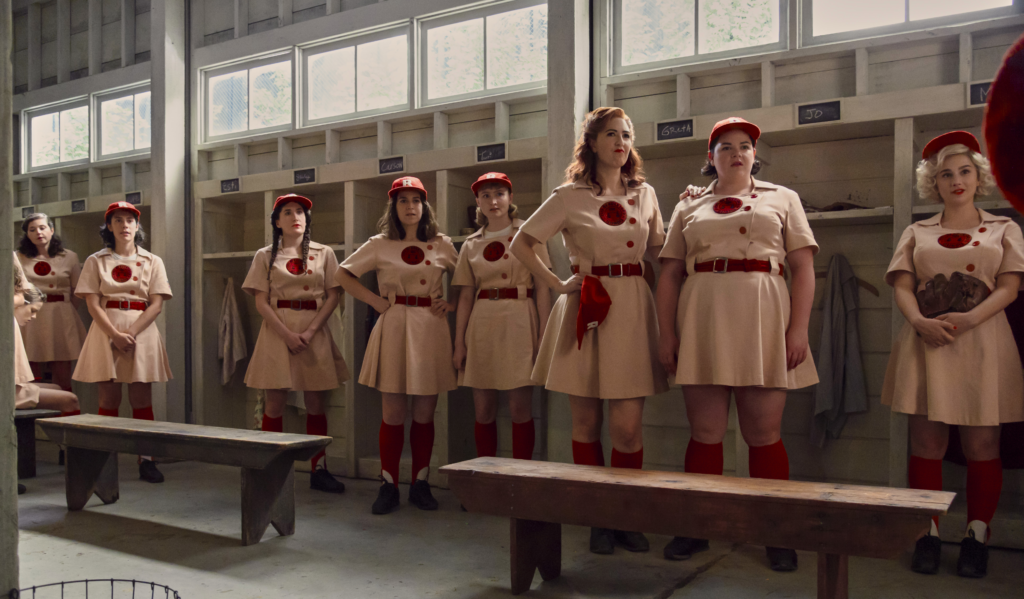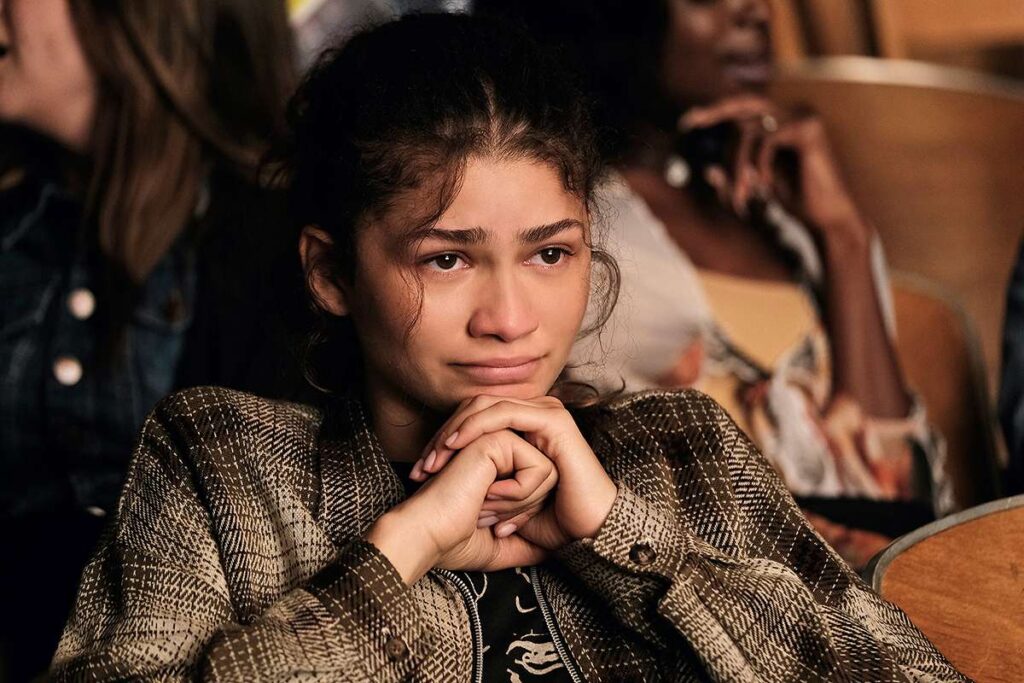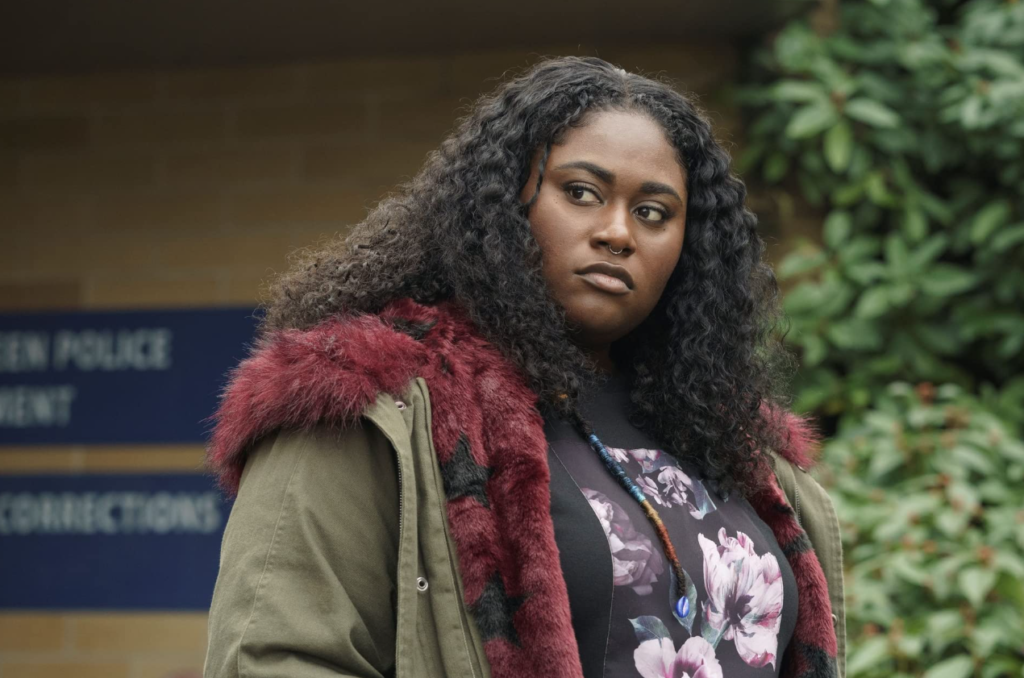Bonnie Arnold has plenty of reasons to be animated of late.
Not only was she named co-president of DreamWorks feature animation last month with fellow producer Mireille Soria, but the industry veteran with 30-plus years of experience is also the lone woman competing in the best animated feature category at the Oscars this year. In fact, Arnold’s contender, the Viking action-adventure fantasy “How to Train Your Dragon 2” written and directed by Dean DeBlois, is considered the front-runner after claiming both an Annie Award and a Golden Globe.
While “The Lego Movie” was the highest-grossing animated film domestically last year, “Dragon 2” soared to the worldwide box office heights with $618.9 million in ticket sales. The success of the sequel has been a rare bright spot these days for Dreamworks, the cartoon factory co-founded by Jeffrey Katzenberg, whose other recent titles — “Turbo,” “Rise of the Guardians,” “Mr. Peabody & Sherman” and last fall’s “Penguins of Madagascar” — have failed to fully capture the public’s imagination.
Arnold has been to the Academy Awards ball before, including with the original “How to Train Your Dragon” in 2010. She was an associate producer on 1990’s best-picture champ “Dances With Wolves” and a producer on 1995’s “Toy Story.” But a win for “Dragon 2” would be especially sweet, since it will be the first animated-feature Oscar that DreamWorks has won since 2001’s “Shrek” was honored in the category’s inaugural year.
The former Atlanta resident originally set out to be a journalist, studying at the University of Georgia and Boston University, where she received a master’s degree. But she moved to the entertainment field in the 1980s after being recruited as a unit publicist for the PBS series “King of America,” an American Playhouse production. She performed various functions on such live-action films as 1985’s “The Slugger’s Wife” and 1986’s “The Mosquito Coast.”
Her involvement in the world of animation began after she was recruited by Disney and entered the then-brave new genre of computer-animated features with Pixar’s “Toy Story.” As she once told the Los Angeles Times, “I thought, ‘This is going to change the world. I need to be a part of it.’” She moved on to 1999’s “Tarzan” before Katzenberg tempted her to join DreamWorks to work on 2006’s “Over the Hedge.”
Arnold found time in between tending to her new duties and preparing for Oscar night on Feb. 22 to discuss how women are making in-roads into animation, as well as plans for DreamWorks’ future.
W&H: First off, congratulations on both your new job and the Oscar nomination.
BA: I am more thrilled than I can tell you. Being an Academy Award nominee — wow. And I am more than thrilled for the movie.
W&H: I know from covering animation that the artists like to do caricatures of their co-workers or use them as inspirations for film characters. Has that happened to you?
BA: My favorite caricature is one by John Musker [co-director of “The Little Mermaid” and “Aladdin”]. He does amazing caricatures. I have it framed and hanging in my house. John and I weren’t just colleagues. We were on the same schedule and would end up arriving at the parking lot at Disney at the same time. We would walk back and forth together. I am known for being a bag lady — I am always carrying a bunch of them, with a change of clothes or whatever — so he drew me hauling five bags.
And I have one by Pete Docter [director Pixar’s “Monsters, Inc.” and “Up,” as well as head animator on “Toy Story”] that he sketched during a story meeting. The thing in my head when I look at it is that it looks like my daughter, Lily, who was born during the making of “Toy Story.”
W&H: What about a character that resembles you?
BA: There is a little girl named Bonnie in “Toy Story 3,” who inherits all of Andy’s toys. With all due humility, I think I was part of the inspiration for her.
W&H: Have there been many women at other animation studios with comparable positions as yours and Mereille Soria’s?
BA: Sandy Rabins and Penny Finkelman Cox ran Sony, and also Michelle Raimo [Kristin Belson is currently president]. Ann Daly has been an executive at DreamWorks since I’ve been here. Jeffrey is amazing about hiring women, especially as producers.
W&H: We first talked for “Toy Story” in 1995. I remember thinking how unusual it was to speak to a woman working in feature animation at that time.
BA: There weren’t many of us back then, especially involved with the CG animation business. The first thing they had me do when I signed on for “Toy Story” was to go to Siggraph (an annual computer graphics conference). Back then, it was less film-oriented and more technical. It was held in Chicago and I remember thinking, “All my single women friends would love this place. It is a great place to meet guys.” I was pregnant with Lily then, and someone said to me, “We haven’t had a pregnant woman working here before.” Now, more women are becoming part of animation all the time, and not just in technical and artist positions.
W&H: DreamWorks has been ahead of the game in placing women in seats of creative power. I interviewed Brenda Chapman in 1998 for “The Prince of Egypt,” when she became the first female director of a major studio animated feature. She has since become the first woman to win an animated-feature Oscar for 2012’s “Brave.” Vicky Jenson co-directed “Shrek.” The studio also had the first solo female director of an animated film, Jennifer Yuh of 2011’s “Kung Fu Panda 2.”
BA: Brenda really did break ground. Jeffrey and her had a relationship from when they worked on Disney’s “The Little Mermaid.” Her husband, Kevin Lima, co-directed “Tarzan” with me. And Brenda is in development at DreamWorks again. The animation community is a small one. As competitive as it can be at the highest level, we are all supportive of one another.
W&H: The marketplace has become much more crowded these days, with almost every top studio producing animated features. It is much more difficult to score a big hit every time out. What is your game plan to put DreamWorks back on track?
BA: Well, I have only been in my new job for two or three weeks. And I have been sequestered in the world of dragons since 2006. But the strategy is to release fewer films every year and to make sure those are the best films and tell the best stories. Believe me, I don’t have all the answers. But “Dragon 2” has a universal appeal about its storytelling — basically, a boy and his dog. There is no magic pill or potion. We just have to refocus on really good storytelling.
W&H: Obviously, sequels to popular titles are a guaranteed way to attract an audience. But you need new ideas to sell tickets, too.
BA: Our plan is to have two movies a year, one sequel and one original. Animation for me is simple stories well told with memorable characters. You can do that with a sequel, too. Dean, who wrote and directed “Dragon 2” after being a co-director on the original, made a bold choice and decided to age our hero, Hiccup, five years. And introduce his mother. Not many animated characters age up. At a different age, you have different problems. It makes it more relatable. There is also pressure from the fanbase to live up to expectations. I remember when an early picture of the aged-up Hiccup was leaked. Dean got a rash of emails complaints asking where are Hiccup’s freckles? We hadn’t even addressed the freckles at that point. But fans care about little details.
W&H: What will it mean to the studio if “Dragon 2” takes home an Oscar?
BA: It would be an amazing thing for us personally and a professional achievement for our team and DreamWorks at large. Nice and poignant. We have had a rough few weeks, including layoffs [about 500 jobs were cut, according to Variety]. It would be a huge boost.
W&H: DreamWorks will have only one feature this year: “Home,” a buddy comedy that opens March 27. What is nice is that the lead character is a young black girl voiced by Rhianna who befriends an alien, played by Jim Parsons. Besides Gloria the hippo in the “Madagascar” films and Susan in “Monsters vs. Aliens,” I can’t recall another DreamWorks feature with a female protagonist.
BA: As a woman and a mother with a 20-year-old daughter, role models are great. In “Dragon 2,” Astrid and Valka might not be leads, but they are strong female characters. We even get email comments from girls saying they want to be Hiccup. Movies should have more representation of female characters, especially since women are more than half the population. Mireille and I are huge advocates. As my friend Geena Davis [a longtime advocate for gender diversity in children’s entertainment] says, “If you can see it, you can be it.”







